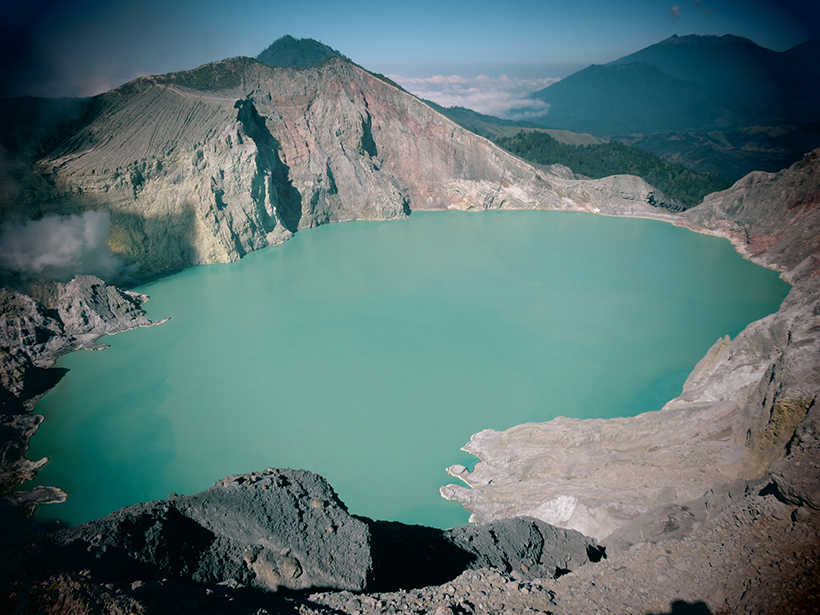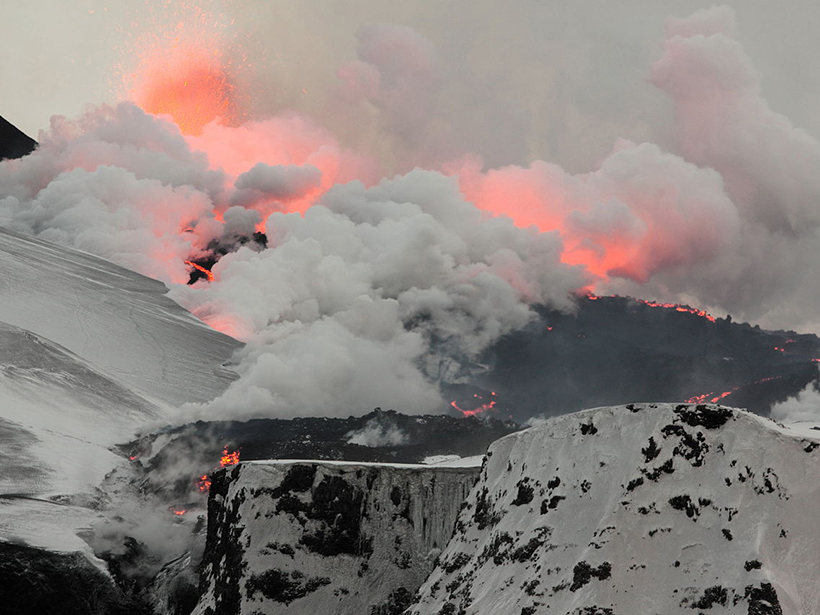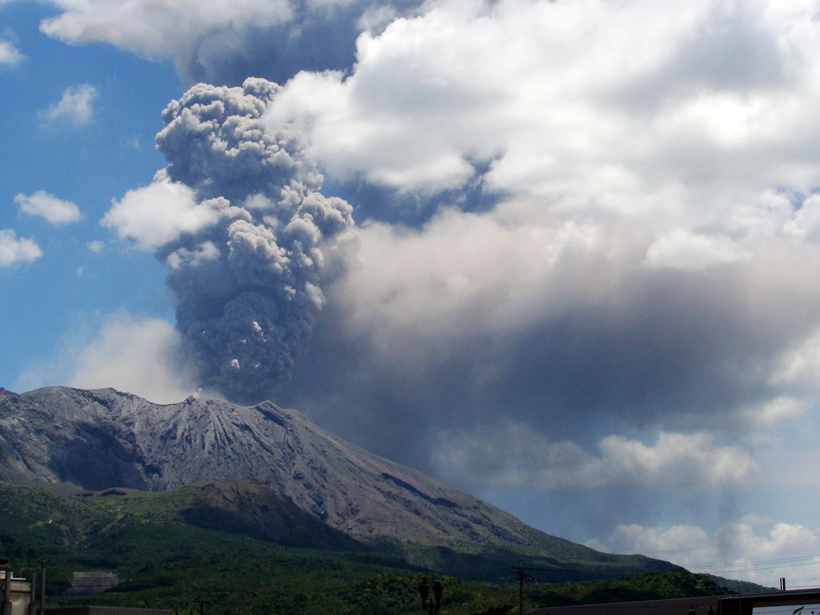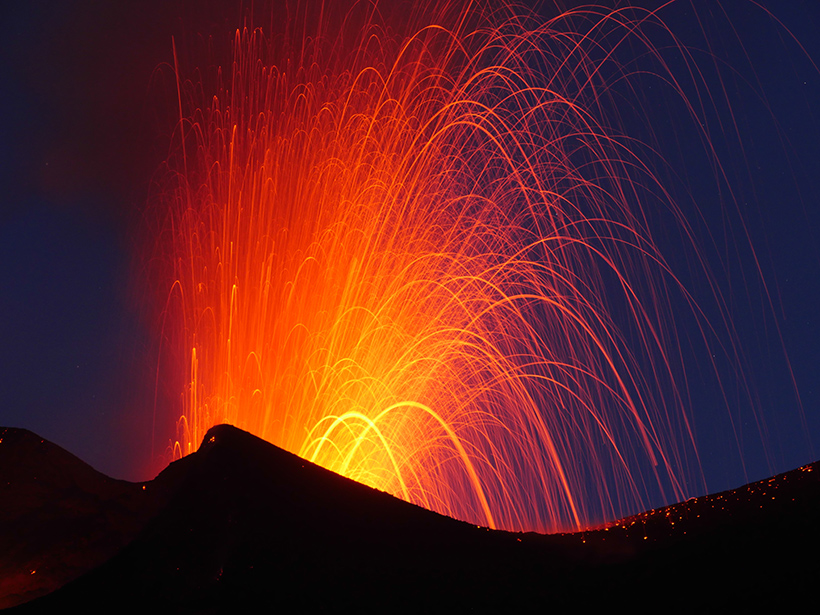9th Workshop of the IAVCEI-Commission on Volcanic Lakes (CVL9); Cameroon, 14–24 March 2016
volcanoes
A New Tool to Better Forecast Volcanic Unrest
In a retrospective study of volcanic unrest at Indonesia's Kawah Ijen, a new model was able to pick up on the rising probability of eruption 2 months before authorities were aware of the risk.
Telica Volcano Rested Quietly Right Before Spewing Ash
The length of quiet periods predicts the severity of eruption events, according to a new model that might soon help forecast explosions worldwide.
Eyjafjallajökull Gave Lava and Ice Researchers an Eyeful
New insights from the 2010 eruption may help volcanologists determine how glaciers shaped ancient lava flows.
Japan's Volcanic History, Hidden Under the Sea
Scientists investigate marine tephra layers for clues to Japan's volcanic past.
Enhancing Safety in a Volcano's Shadow
A new project gives civil authorities and scientists a common set of tools for assessing volcanic hazards and managing associated risks.
Pinatubo 25 Years Later: Eight Ways the Eruption Broke Ground
From the first rapid assessment of a volcano's history to insights on geoengineering, the 15 June 1991 eruption of Mount Pinatubo changed the way we approach and learn from volcanic hazards.
Does Geothermal Exploitation Trigger Earthquakes in Tuscany?
For the past 25 years, power production has been accompanied by a small but steady increase in seismicity near geothermal wells. A new project seeks to explore why.
Understanding Volcanic Eruptions Where Plates Meet
A new project elucidates the relationships between tectonics and volcanic systems and how they influence hazards on Italy's Mount Etna and Vulcano and Lipari islands.
As Lava Flows, Refined Model Predicts a Path
Simulations that melded volcano topography, satellite observations, and virtual lava accurately anticipated the destruction of villages 18 months ago by Cape Verde's Fogo volcano.










